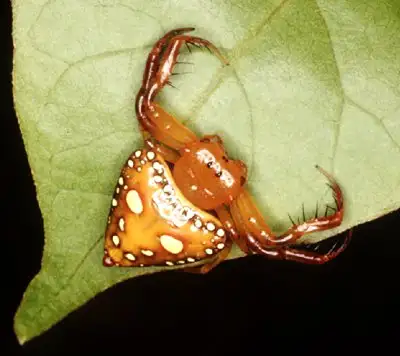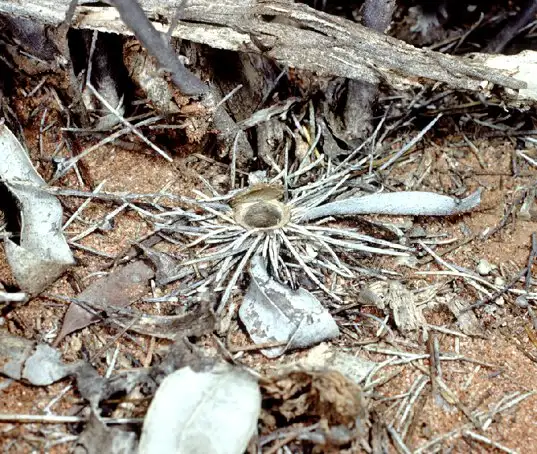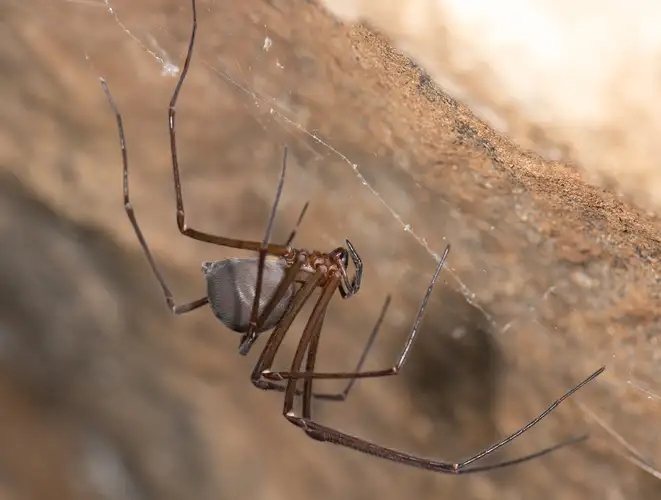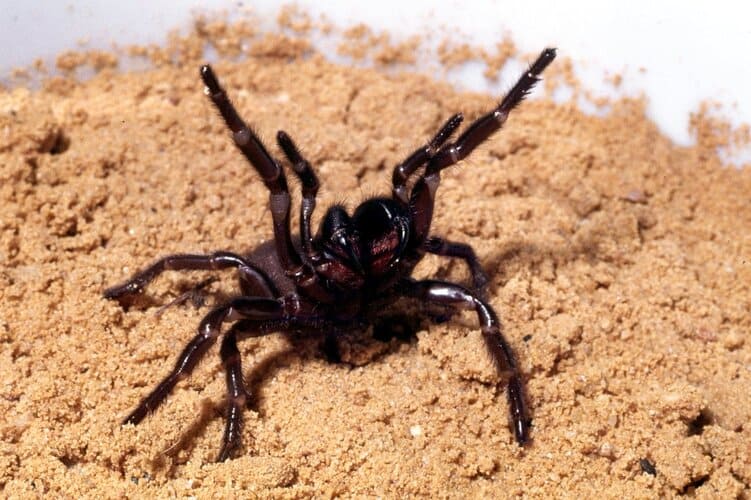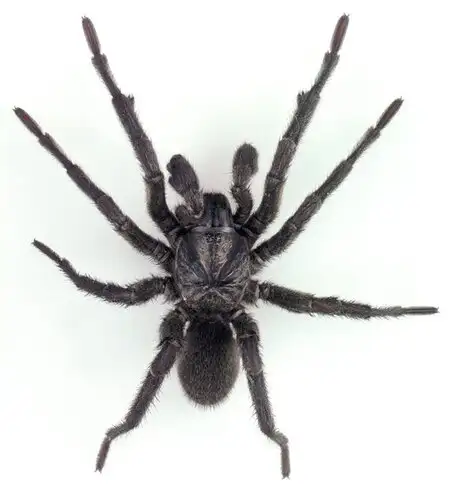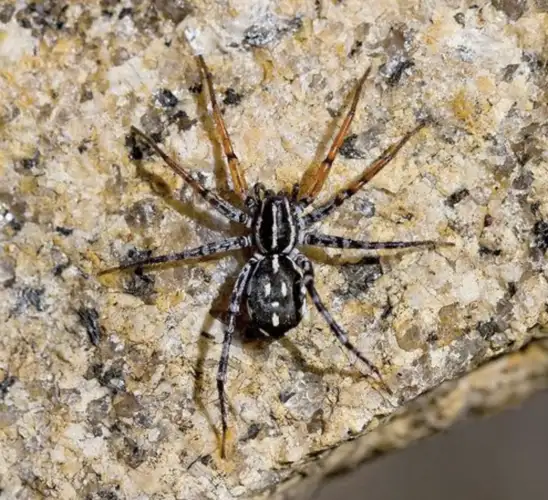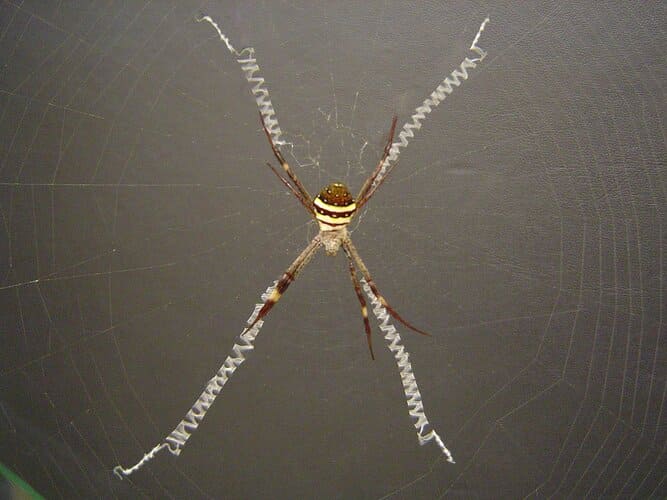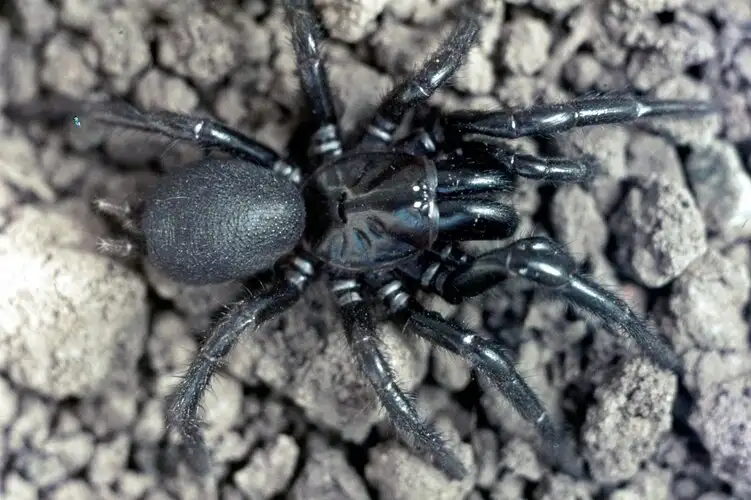Triangular spiders
IUCN
LCBasic Information
Scientific classification
- name:Triangular spiders
- Scientific Name:Arkyidae, especially genus Arkys (representative triangular spider group)
- Outline:Arthropoda
- Family:Arkyidae Arkys
Vital signs
- length:Adult body length usually about 3–8 millimetres, with females slightly larger than males
- Weight:Small foliage dwelling spiders, typically weighing tens to a few hundred milligrams depending on size
- lifetime:Estimated life span around one to two years, influenced by climate and food availability
Feature
Small spiders with distinctly triangular or shield shaped abdomens that live on shrubs and foliage and hunt by ambush rather than by building large webs.
Distribution and Habitat
Shrubs, forest understorey, stream side vegetation and garden hedges in Australia, Tasmania and nearby regions.
Appearance
Variable colours from brown and orange to green with a high, broad abdomen forming a triangular outline, small cephalothorax and relatively short legs adapted for gripping twigs and leaves.
Details
Triangular spiders is an informal name for a group of small spiders that have a distinctly triangular or shield shaped abdomen. Many of the species commonly called triangular spiders belong to the Australian familyArkyidae, especially the genus Arkys. These spiders live mainly on shrubs and trees where they lie in wait for passing insects.
Taxonomy and Naming
Common names: Triangular spiders, Arkys spiders
Representative genus: Arkys (for example Arkys curtulus and related species)
Family: Arkyidae
Higher classification: Phylum Arthropoda → Class Arachnida → Order Araneae → Family Arkyidae
Appearance
Triangular spiders are easily recognised by the shape of their abdomen:
Body size: adults are usually about 3 to 8 millimetres in body length, with females slightly larger than males;
Colouration: colours range from brown and orange to yellow and green, often with contrasting patches or bands that help them blend with foliage and twigs;
Abdomen shape: the abdomen is high and broad with a triangular or shield like outline when viewed from above, sometimes with small projections along the rear edge;
Body form: small cephalothorax, large angular abdomen and relatively short legs, with the front legs a little stronger for grabbing prey;
Posture: when resting they press close to twigs or petioles and hold the body in a way that makes them look like a bud or a piece of dried plant material.
Distribution and Habitat
Most triangular spiders in the strict sense are found in Australia, Tasmania and nearby regions, although related forms occur elsewhere in the Pacific and parts of Asia.
They are commonly associated with:
Low shrubs and understorey vegetation in forests;
Forest edges, clearings and vegetation along streams and gullies;
Grassy areas with scattered shrubs and climbers;
Garden shrubs, hedges and ornamental plantings in parks and urban areas.
They prefer structurally complex vegetation where small spiders can hide among leaves and twigs while waiting for prey.
Behaviour and Diet
Triangular spiders are mainly ambush predators that rely on stillness and camouflage:
Some species build small, simple support webs or anchor lines, but they do not usually make large, regular orb webs;
Many individuals spend long periods motionless on twigs, stems or the underside of leaves;
Their prey consists of small insects and other arthropods such as aphids, tiny moths, flies and small beetles;
When a suitable prey item comes within reach, the spider quickly seizes it with the front legs and delivers a bite, then moves to a sheltered spot to feed.
They tend to be more active at night and during the early morning, while daytime behaviour is dominated by resting and concealment.
Reproduction and Life Cycle
The life cycle of triangular spiders follows the general pattern of many small foliage dwelling spiders:
Mature males leave their usual resting sites and search through vegetation for females;
Courtship involves careful approach and palpal tapping or body movements that signal species and sex;
After mating, females produce egg sacs wrapped in silk and attached to sheltered locations on leaves or twigs;
Spiderlings initially remain near the egg sac and then disperse to nearby vegetation where they establish their own hunting sites.
Venom and Human Significance
As small spiders, triangular spiders have venom adapted for subduing small insect prey. There is no evidence that they pose a serious medical threat to humans.
If a bite occurs, expected effects are usually limited to:
Mild local pain or irritation at the bite site;
Slight redness or itching that resolves without treatment in most people;
Occasional stronger local reactions in individuals who are particularly sensitive to arthropod bites.
Keeping the bite clean and monitoring for unusual symptoms is normally sufficient. Medical advice can be sought if significant discomfort or allergic reactions develop.
Ecological Role and Relationship with People
Triangular spiders are important small predators in shrub and forest canopies. By feeding on plant dwelling insects, they contribute to the natural regulation of herbivore populations.
In gardens and parks they do not interfere with human activities and can be considered beneficial residents that help to keep small insect numbers in balance.
FAQ
Q1. Where are triangular spiders most likely to be found?
They are most often found on shrubs, small branches and the underside of leaves in forests, woodland edges and gardens,
especially in Australia and Tasmania.
Q2. Are triangular spiders dangerous to humans?
No. They are small spiders and are not regarded as medically important. Bites are rare and effects are usually mild and localised.
Q3. How can I recognise a triangular spider?
Look for a small spider with a high, broad abdomen that forms a triangular or shield like outline when viewed from above,
often sitting very still on a twig or leaf stalk.
Q4. Do triangular spiders play a useful role in gardens?
Yes. They feed on a variety of small plant dwelling insects and are part of the natural pest control community in shrub and hedge layers.

